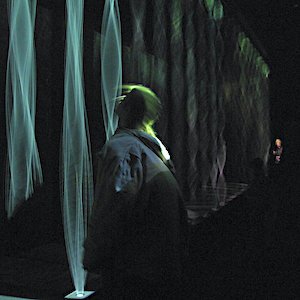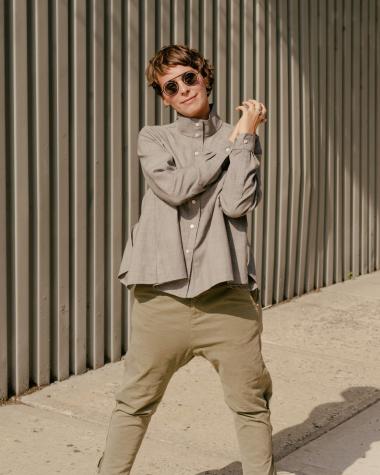
In trying to describe Ash Fure’s music to my sibling, they commented that it seemed a lot like gothic horror literature. Spooky mansions came to mind, and I thought, “That ain’t it.” However, what my sibling heard in my description was the way Fure elicits fear in her listeners — which is a salient connection to make. Her sounds are immediate, they cleave close to the bone, and they feel tactile in a way that relates more to one’s naked body than to sound coming from a stage. Gothic horror misdirects a reader’s attention to the creepy graveyard or the old man sitting at the end of the street, only to reveal that what is most dangerous or frightening is within the human condition, within the mind already. Fure is not trying to scare us, but she is fascinated with the foundationally unsettling.
 Something to Hunt, available Oct. 30 from Sound American and featuring recordings by the International Contemporary Ensemble and the Interlochen Arts Academy Orchestra, opens with the amplified breaths and intimate mouth sounds of Lucy Dhegrae and Alice Teyssier. Immediately knowable yet disarming, these sounds are emblematic of Fure’s uncanny vocabulary. This first piece, Shiver Lung (2016), is drawn from her larger immersive installation work The Force of Things, in which she attempts “to train our perception beyond its given boundaries — below the sounds we’re built to hear.” In fact, most of her works access senses that are behind language, more rooted in the gut.
Something to Hunt, available Oct. 30 from Sound American and featuring recordings by the International Contemporary Ensemble and the Interlochen Arts Academy Orchestra, opens with the amplified breaths and intimate mouth sounds of Lucy Dhegrae and Alice Teyssier. Immediately knowable yet disarming, these sounds are emblematic of Fure’s uncanny vocabulary. This first piece, Shiver Lung (2016), is drawn from her larger immersive installation work The Force of Things, in which she attempts “to train our perception beyond its given boundaries — below the sounds we’re built to hear.” In fact, most of her works access senses that are behind language, more rooted in the gut.
Individual strains, such as the chitterings in Bound to the Bow (2016), may sound like one thing — spattering oil in a pan — and simultaneously feel like another — beetles crawling across skin. Each color in her palette has this double life, the auditory and intuitive kinesthetic relationship. Achieved sometimes through electronics, sometimes with the simplest shake of a plain piece of paper, her use of these doubly aural and physical elements compels the listener’s attention. In the titular piece Something to Hunt (2014), the creature’s footfalls — every shuddering bass attack — are impossible not to heed.
A Library on Lightning (2018) has the most cathartic climax of this portrait collection. (The other pieces feel a bit shocking, cold, even while being overwhelmingly impressive.) With Lightning, trumpeter Nate Wooley, bassoonist Rebekah Heller, and bassist Brandon Lopez give the listener the chance to bleed a bit into the accumulated emotions of things. Wooley brings the pitiful monster to the party, producing wails that are only human-adjacent. Yet the heft of the harm expressed in this piece feels more human than the feral gestures of Fure’s other works. More so than in the earlier pieces on this album, you get the chance to look back on the work during the thick weave of the climax.
Hearing creepy or unsettling music on a contemporary classical concert is not uncommon. This album calls to mind a trend: how some composers, in an effort to escape recognizable musical language, step left of language to access more immediate, wordless emotions, like fear or pain. Fure accomplishes more with her work though. Her tenacious interest in the kinesthetic soul of sound, the possibilities of perception, lifts her pieces far above the level of haunted house.
Still, there’s nothing wrong in letting yourself bathe in the goosebumps Something to Hunt will bring.



